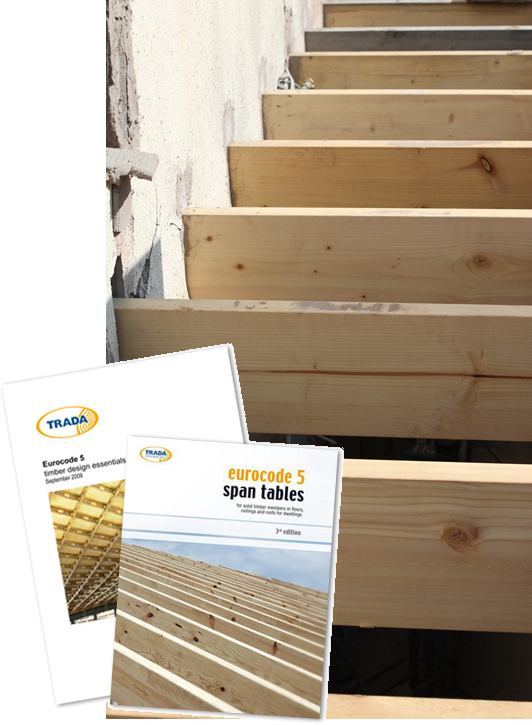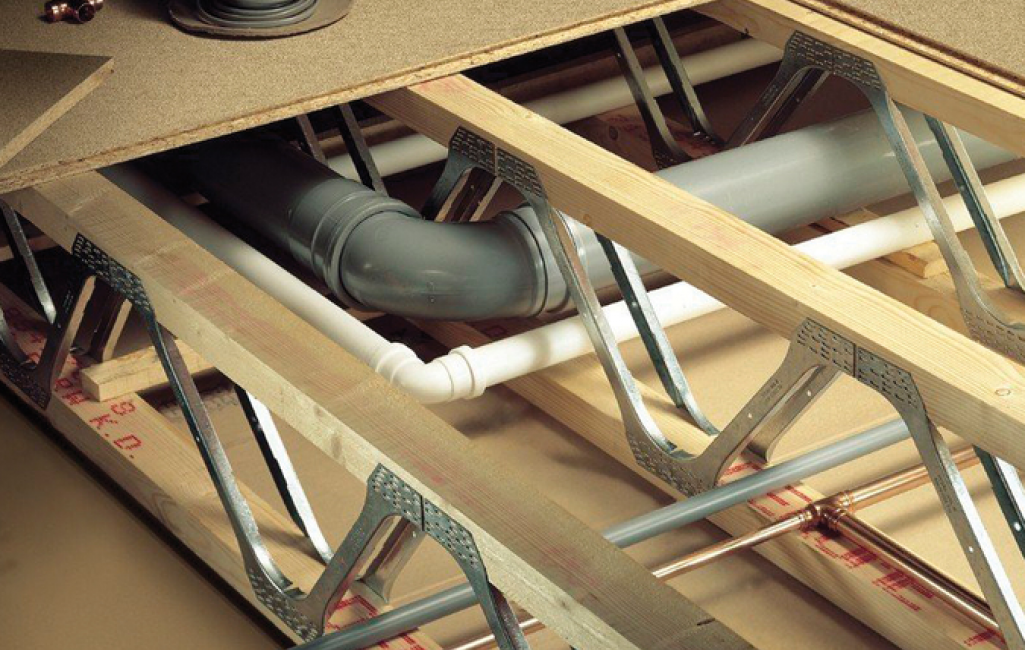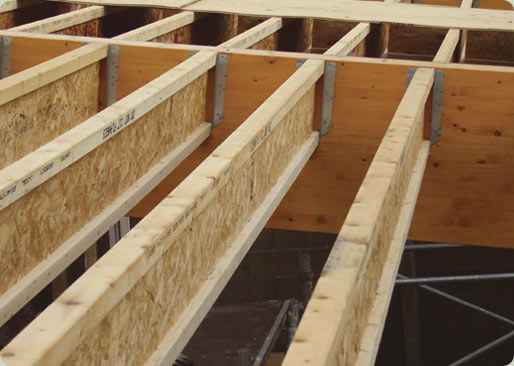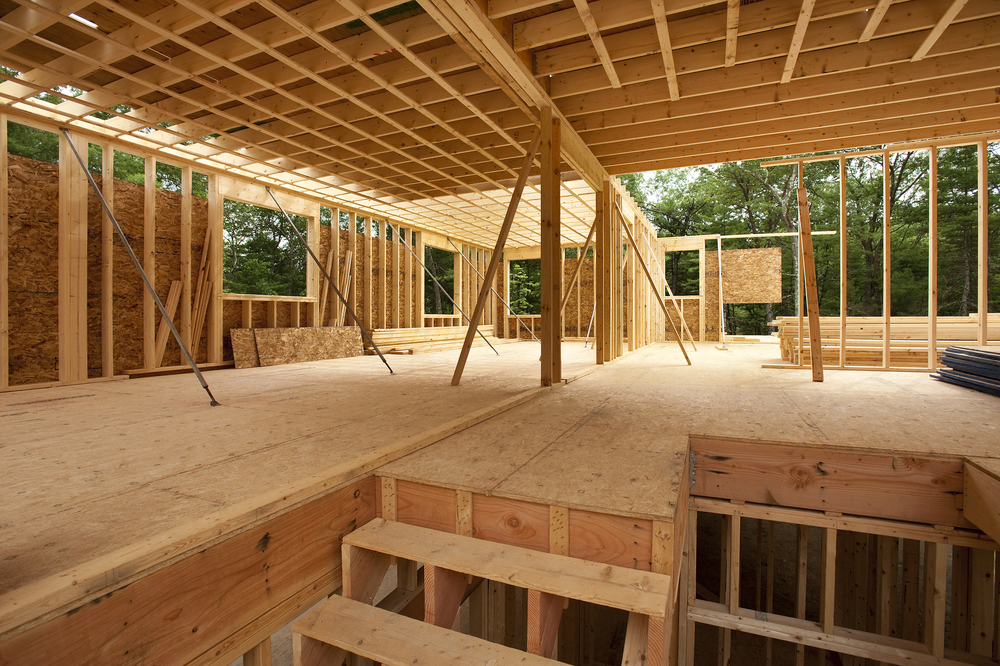Span Tables
Wood Campus Timber Trade Topics are produced in collaboration with Timber Development UK. For further information, visit https://timberdevelopment.uk/.
TOPIC CHECKLIST
- Check your timber is graded and marked to show it complies with the correct standards and strength requirements laid down by building codes and regulations
- Check Eurocode 5 Span Tables when calculating spans
- Check manufacturer’s literature for span tables for engineered products
Sample span tables
The following span tables are indicative of some of the spans required for domestic floor joists where C16 and C24 strength classes are used.
They refer to a dead load of not more than 0.5kN/m2 (excluding the weight of the joist) and an imposed load not exceeding 1.5 kN/m2.
Always consult Eurocode 5 Span Tables when calculating spans.
Use kiln-dried softwood in the appropriate strength class, grade stamped to comply with Eurocode 5 (EC5)
For extended use, specify pressure treated timber.

The load a member can carry depends on several factors, including its span, thickness, width and species. Usually, the deeper and wider the section, the longer the span.
Span tables determine the size of a timber member of a particular strength class required for a given span, as well as the maximum spacing between each section or timber member.
The following examples, which apply to solid timber members, give an illustration of how to use span tables for domestic floor joists at 400mm centres.
Always consult Eurocode 5 Span Tables when calculating spans.
| JOIST SIZE (MM) | MAX SPAN (METRES) | |
|---|---|---|
| C16 | C24 | |
| 38 x 95 | 1.61 | 1.99 |
| 47 x 95 | 1.72 | 2.05 |
| 38 x 220 | 4.06 | 4.52 |
| 47 x 220 | 4.36* | 4.85 |
*Two additional joists required – see Eurocode 5, Section 4.1.5
Changing to 600mm centres will change the span distances for the same timber sizes.
| JOIST SIZE (MM) | MAX SPAN (METRES) | |
|---|---|---|
| C16 | C24 | |
| 38 x 95 | 1.32 | 1.54 |
| 47 x 95 | 1.47 | 1.70 |
| 38 x 220 | 3.54 | 3.95 |
| 47 x 220 | 3.81 | 4.25 |
So if you wanted to span four metres at 600mm centres, you could use the lighter-weight option of 38mm x 220mm C24 instead of 47mm x 220mm C16.
Spans for engineered wood products and I-joists
The introduction of specially engineered timber products, such as glulam beams, I-joists and metal web joists provides solutions across a larger range of depths and spans, and shrinkage after installation is likely to be smaller.
When using these products please refer to the manufacturer’s own literature and span tables, which are usually available from your timber supplier.


This factsheet was correct at the time of writing but should be viewed in the context of the latest building regulations, for example Approved Document B and Amendments, which governs the use of combustible materials in taller buildings.
These can be found at www.gov.uk/government/collections/approved-documents.
Sustainable timber
Timber is the most sustainable mainstream building product. It is naturally renewable. Over 90% of timber used in UK construction comes from Europe, where more trees are grown than harvested (source: TTF Statistical Review 2016).
Softwood and temperate hardwood forests in Scandinavia, Europe, Canada and North America are stable or growing. Growing forests act as carbon sinks; wood products act as carbon stores.
Ask for PEFC or FSC Chain of Custody certification.
See Wood Campus RIBA CPD module Procuring Sustainable Timber for more on timber certification and sustainability and government requirements.



